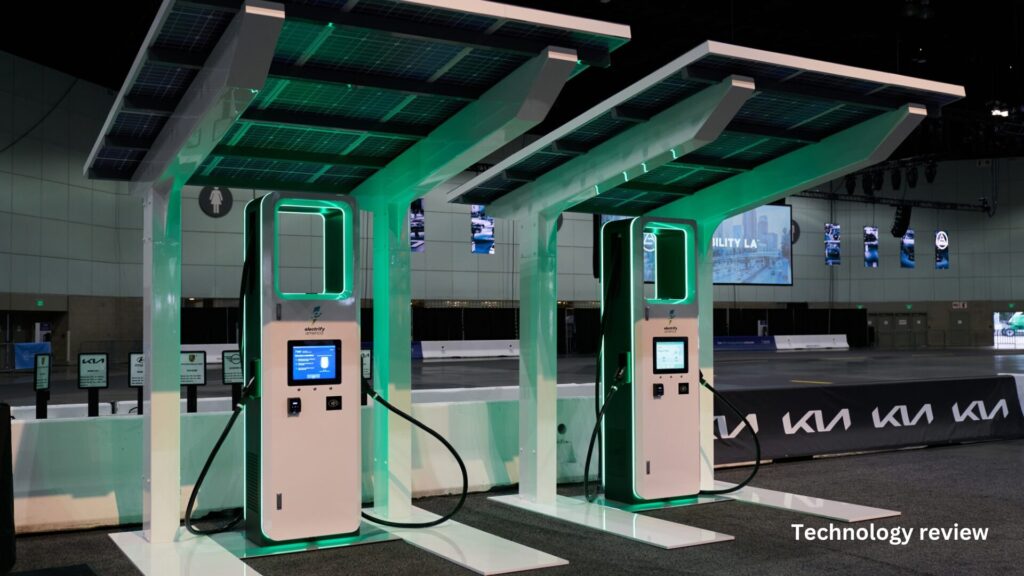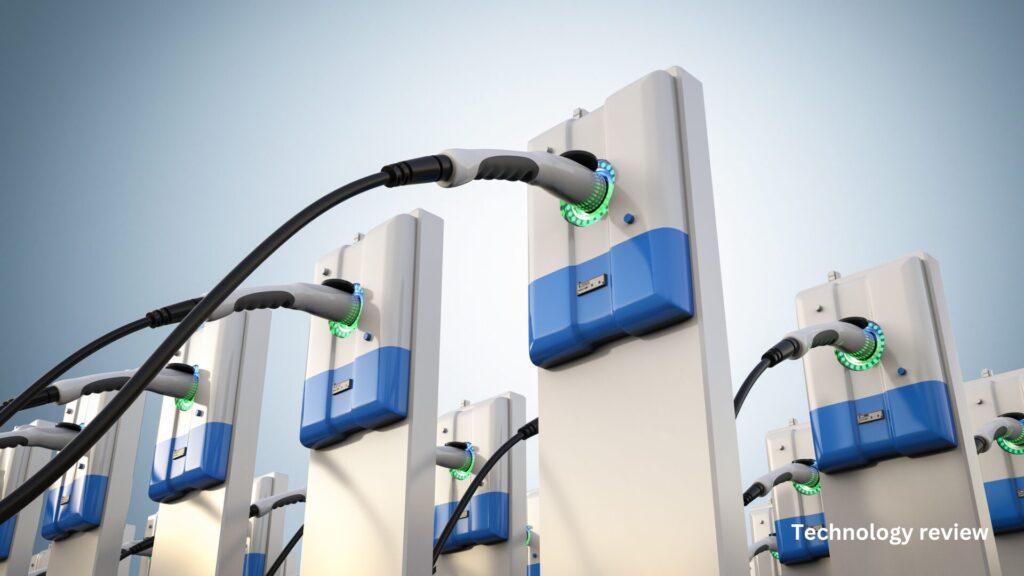How EV Charging Works: A Detailed Explanation As electric vehicles gain popularity, you may find yourself considering making the switch from gas to electric. But before you do, it’s important to understand how EV charging works. Unlike filling up at a gas station, charging an electric vehicle involves a different process and infrastructure. In this article, you’ll learn the ins and outs of EV charging, from the types of chargers available to how long it takes to power up your vehicle. Whether you’re a prospective EV owner or simply curious about the technology, this comprehensive guide will provide you with the knowledge you need to navigate the world of electric vehicle charging.
Different Types of EV Chargers
Understanding how EV charging works requires familiarity with the various charger types available. Let’s explore the three main categories of EV chargers and their distinct features.
Level 1 Chargers
Level 1 chargers are the most basic type, using a standard 120-volt household outlet. While convenient for home use, they offer the slowest charging speeds. These chargers typically add about 3-5 miles of range per hour, making them suitable for overnight charging or plug-in hybrid vehicles with smaller batteries.
Level 2 Chargers
Level 2 chargers operate on 240-volt power and are the most common type for both residential and public charging stations. They can add 25-30 miles of range per hour, significantly faster than Level 1 chargers. Many EV owners install Level 2 chargers at home for quicker overnight charging.
DC Fast Chargers
DC fast chargers, also known as Level 3 chargers, provide the fastest charging speeds available. These high-powered stations can add up to 200 miles of range in just 30 minutes, depending on the vehicle’s capabilities. DC fast chargers are typically found along highways and in urban areas, facilitating long-distance travel for EV owners.
By understanding these different charger types, EV owners can better plan their charging strategy and maximize their vehicle’s efficiency. The choice of charger depends on factors such as charging speed requirements, vehicle compatibility, and available infrastructure.

Understanding Charging Levels – Level 1, Level 2 and DC Fast Charging
Understanding how EV charging works is crucial for any electric vehicle owner. There are three main levels of EV charging, each offering different charging speeds and applications.
Level 1 Charging
Level 1 charging is the slowest method, utilizing a standard 120-volt household outlet. This option adds about 3-5 miles of range per hour, making it suitable for overnight charging at home or extended workplace parking.
Level 2 Charging
Level 2 charging uses a 240-volt power source, similar to what large appliances use. It can add 25-30 miles of range per hour, making it ideal for home installations and public charging stations. Many EV owners opt to install a Level 2 charger at home for faster, more convenient charging. How EV Charging Works: A Detailed Explanation.
DC Fast Charging
DC Fast Charging, sometimes called Level 3, is the fastest charging option available. Using direct current (DC) instead of alternating current (AC), these stations can add up to 200 miles of range in just
30 minutes. DC Fast Charging is primarily found at public charging stations and along major travel routes, perfect for long-distance trips.
Understanding these charging levels helps EV owners plan their charging strategy effectively, ensuring their vehicle is always ready for the road.
The EV Charging Process Step-By-Step
Understanding how EV charging works is essential for any electric vehicle owner. The process is straightforward but involves several key steps to ensure efficient and safe charging.
Connecting Your EV
To begin charging, park your vehicle near the charging station and locate the charging port on your car. Open the port cover and select the appropriate connector from the charging station. Most modern Evs use either the J1772 connector for Level 1 and 2 charging or a DC fast charging plug like CCS or CHAdeMO.
Initiating the Charge
Once connected, you’ll need to authenticate the charging session. This can be done through a mobile app, RFID card, or credit card payment at the station. After authentication, the charging station communicates with your vehicle to determine the appropriate charging rate and begins the flow of electricity.
Monitoring and Completion
During the charging process, you can monitor the progress through your vehicle’s dashboard or a companion app. The charging speed will vary depending on factors such as the station’s power output, your vehicle’s battery capacity, and current charge level. When the battery reaches its target charge or the set time limit is reached, the charging automatically stops. How EV Charging Works: A Detailed Explanation.
Understanding how EV charging works helps you maximize efficiency and plan your trips accordingly. With practice, the process becomes second nature, making the transition to electric vehicles seamless and convenient.
Charging Time Comparisons Between Charger Types
Understanding how EV charging works involves comparing the charging times of different charger types. The speed at which your electric vehicle replenishes its battery depends significantly on the charger you use.
Level 1 Charging
Level 1 chargers, which use a standard 120-volt household outlet, are the slowest option. These typically add about 3-5 miles of range per hour of charging. While convenient for overnight charging at home, they’re less practical for quick top-ups.
Level 2 Charging
Level 2 chargers, operating at 240 volts, offer faster charging speeds. These can add approximately 25-30 miles of range per hour, making them ideal for home and workplace charging. Many public charging stations also use Level 2 chargers.
DC Fast Charging
For the quickest charging experience, DC fast chargers are the go-to option. These high-powered stations can add up to 100-200 miles of range in just 30 minutes, depending on the vehicle and charger specifications. However, they’re primarily found at dedicated charging stations rather than residential settings.
When considering how EV charging works, it’s crucial to factor in these time differences. Your charging needs and lifestyle will determine which type of charger is most suitable for your electric vehicle.
Factors That Impact EV Charging Speed
Understanding how EV charging works involves considering several key factors that influence charging speed. These elements play a crucial role in determining how quickly your electric vehicle’s battery can be replenished.
Battery Capacity and State of Charge
The size of your EV’s battery and its current charge level significantly affect charging time. Larger batteries naturally take longer to fill, while batteries with a lower state of charge tend to accept energy more rapidly at first, slowing down as they approach full capacity.
Charging Station Power Output
The power output of the charging station is a critical factor in how EV charging works. Level 1 (120V) chargers provide the slowest charge, while Level 2 (240V) chargers offer faster rates. DC fast chargers deliver the quickest charging speeds but are not compatible with all EVs.
Vehicle’s Maximum Charging Rate
charging station offers higher power output, the vehicle’s onboard systems limit the charging speed to protect the battery and ensure safety.
Environmental Conditions
Temperature plays a significant role in charging efficiency. Extreme cold or heat can slow down charging speeds as the battery management system works to maintain optimal battery temperature. This is why some EVs include battery thermal management systems to mitigate these effects.
Conclusion
As you’ve learned, EV charging involves a complex interplay of components and systems working together seamlessly. From AC to DC conversion to communication between vehicle and charger, the process enables millions of EV owners to power their vehicles conveniently and efficiently. As charging technology continues to advance, you can expect even faster charging speeds, more widespread infrastructure, and enhanced user experiences in the years ahead. By understanding the fundamentals of how EV charging works, you’re better equipped to take advantage of this transformative technology. Whether you’re a current or prospective EV owner, staying informed about charging innovations will help you make the most of the electric driving revolution.



